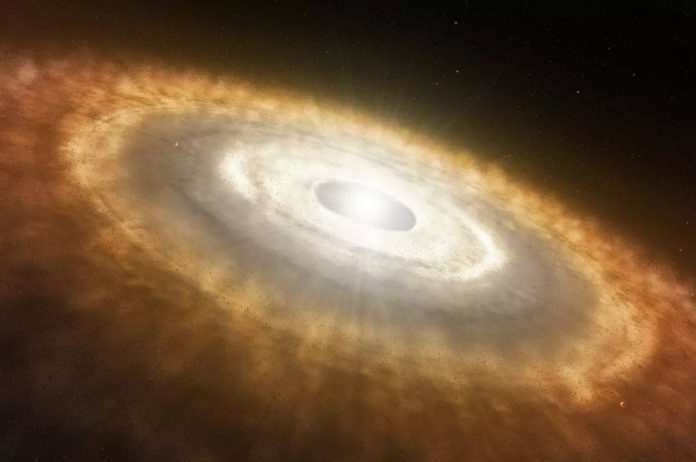In a new study, scientists from the University of California, Davis discovered that krypton from the Earth’s mantle, which was taken from geologic hot spots in Iceland and the Galapagos Islands, provides a more detailed picture of how our planet formed.
Using krypton isotopes, scientists are able to identify the ingredients that formed Earth, such as solar wind particles and meteorites from the inner and outer solar system.
The findings suggest that Earth’s volatile components – vital elements like carbon, water, and nitrogen — arrived as the planet grew. This contradicts the widely held belief that the majority of Earth’s volatile elements were delivered near the conclusion of Earth’s development, as indicated by the moon-forming big impact.
To the contrary, it appears from the krypton isotope data that planetesimals from the icy outer solar system assaulted the Earth millions of years before the huge crunch. The infant Earth was also battered by meteorites as well as dust and gas from the solar nebula (the cloud around the sun).
“Our results require concurrent delivery of volatiles from multiple sources very early in Earth’s formation,” says Sandrine Péron, the lead author of the study.
“This study provides clues for the sources and timing of volatile accretion on Earth, and will help researchers better understand how not only Earth formed, but also other planets in the solar system and around other stars.”
The study was published in the journal Nature.
Slushy magma plumes rising from the lowest layer of the mantle, at its boundary with the Earth’s iron core, feed the volcanic hot spots pouring lava in Iceland and the Galapagos. The metals and minerals in this deep layer have remained virtually constant since before the moon-forming collision, acting as a time capsule of the early Earth’s chemistry dating back more than 4.4 billion years.
Mukhopadhyay’s lab focuses on measuring noble gases in rocks from Earth and beyond. The team retrieved lava from hot spot plumes to investigate deep mantle krypton. When the lava cools to a solid, the old gases rise to the top and get imprisoned and entombed as bubbles in a glassy matrix, offering some protection from outside pollution. However, the most abundant krypton isotopes in these bubbles equal to only a few hundred million atoms, making detection difficult, according to Mukhopadhyay.
Péron developed a new mass spectrometry technique for measuring mantle krypton, concentrating krypton from rock samples in an atmosphere almost free of air pollution and neatly separating it from argon and xenon.
“Ours is the first study to precisely measure all krypton isotopes for the mantle, including the rarest krypton isotopes, Kr-78 and Kr-80,” she says.
The chemical fingerprint of deep mantle krypton was determined to be very similar to primitive, carbon-rich meteorites, which may have been delivered from the cold, outer limits of the solar system. However, recent research by Mukhopadhyay and colleagues discovered that neon, another noble gas in the deep mantle, was produced from the sun.
The two contrasting results point to at least two independent volatile sources for the Earth’s mantle, both of which were supplied extremely early in its history. In addition, the researchers discovered less of the uncommon isotope Kr-86 in the deep mantle when compared to known meteorites. The lack of Kr-86 shows that known meteorites may not account for all of the krypton in the mantle.
Finally, the new findings have implications for how the Earth’s atmosphere formed. The researchers discovered that the ratio of distinct krypton isotopes in the deep mantle did not match the isotope ratio in the Earth’s atmosphere. This suggests that following the moon-forming impact, certain gases in the atmosphere, including noble gases like krypton, were transferred to Earth. Otherwise, due to isotopic equilibration after the impact, the Earth’s mantle and atmosphere would have the same isotopic makeup, according to Péron.
Source: Nature
You were reading: Earth’s mantle reveals a more detailed picture of how our planet formed
